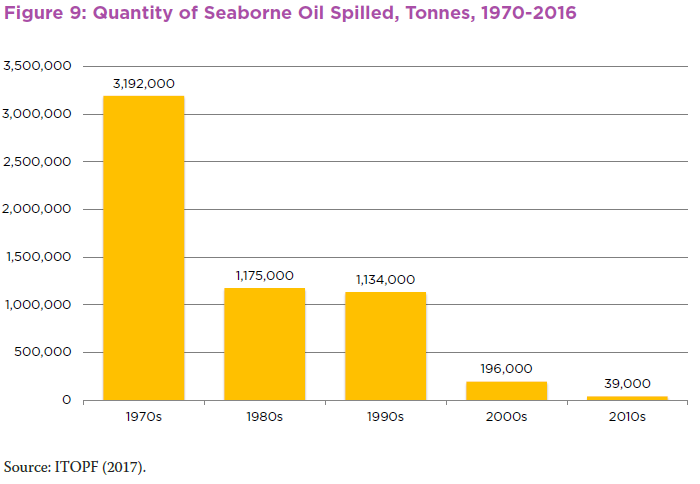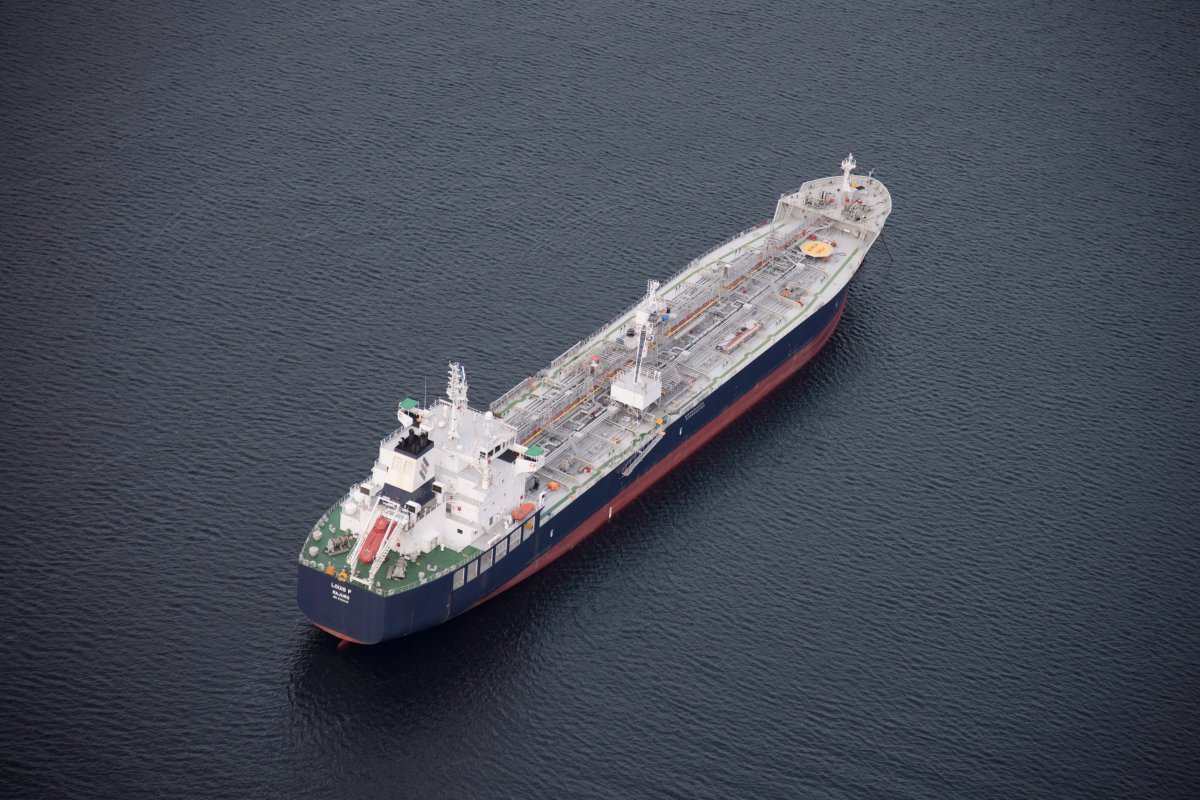A new report from free market think tank the Fraser Institute says that marine tankers are less likely to spill petroleum than pipelines or rail, based on spills per million barrels shipped.

But there are other matters to consider when deciding what’s safe.
Coverage of pipeline safety on Globalnews.ca:
The report, titled Safety First: Intermodal Safety for Oil and Gas Transportation, looks at the safety of marine tankers after the approvals of three pipeline projects: Trans Mountain, Keystone XL and Line 3.
Authors Kenneth Green and Taylor Jackson argued that marine tankers are safer because they spill less than 0.001 per million barrels of oil shipped (Mboe).
That’s less than rail (0.079 Mboe) or pipelines (0.031 Mboe).
READ MORE: Progress on pipelines could mean less oil will be transported by rail
The authors based their conclusions largely on Transportation Safety Board (TSB) data from 2004 to 2015, as well as international marine tanker data for the last decade.
There hasn’t been a marine tanker spill in Canada in over 20 years (though there were small coastal spills that didn’t involve tankers); because of this, the institute used international data from the last 10 years, based on incidents that included the release of petroleum product.

There were 480 instances in which pipelines released petroleum product between 2004 and 2015; 15,309 Mboe were transported in the same time frame, providing a release per Mboe of 0.031.
Meanwhile, there were 73 incidents in which rail released product in that time; 928 Mboe were transported through this mode, resulting in a release per Mboe of 0.079.
Marine tankers saw 140 releases of product measured at more than seven tonnes in the last 10 years. Marine tankers transported 238,811 Mboe in that time, which resulted in a release per Mboe of less than 0.001.
READ MORE: Human error a growing factor in pipeline leaks: National Energy Board
The report noted that seaborne oil spills have declined considerably since the 1970s, based on data from the International Tanker Owners Pollution Federation (ITOPF), a non-profit that acts on behalf of tanker owners and other shipowners.
A decline was observed in both the number of spills and the volume of product released.

But there isn’t really an “either/or” comparison to be made between transporting oil by marine tanker, or by pipeline or rail, resource economist Ngaio Hotte told Global News.
“Increasing the amount of oil shipped by tanker implies a corresponding increase in the amount shipped by pipeline or rail,” she said.
She also said it can be “much more costly and difficult to clean up oil spilled in the marine environment.”
“The cost of cleaning up an oil spill is influenced by many factors such as the type of product spilled, the location and timing of the spill, proximity to sensitive areas and the per-unit cost of recovery and cleanup,” Hotte said.
READ MORE: Oil spill in southwest Alberta estimated at 25,000 litres: Husky Energy
Five years ago, Hotte and UBC fisheries economist Rashid Sumaila carried out research showing that a major tanker spill off B.C.’s northern coast could “wipe out economic gains” from the then-proposed Northern Gateway Pipeline, a project that Prime Minister Justin Trudeau halted last year.
The research, which was sponsored by WWF Canada and conducted independently, showed that a major spill off the province’s northern coast could result in losses of $300 million in economic activity, as well as spill cleanup costs of up to $9.6 billion. That would have outnumbered the $600 million in economic gains that Enbridge anticipated over the project’s lifespan.
But how likely is a spill?
However, there also haven’t been any major spills of crude oil in North American waters since the Exxon Valdez incident in 1989, Kevin Hanna, director of the UBC Centre for Environmental Assessment Research, told Global News.
Most spills that happen are less than seven tonnes in size — small, according to Hanna — and are often due to operational actions, such as loading and unloading.
Taylor Jackson, one of the report’s co-authors, told Global News that the amount of environmental damage would, to an extent, “be a function of the probability that an accident will occur.”
“This is not to say that governments should not take potential damage that could be caused by marine spills seriously,” he said.
“They should indeed take all necessary precautions to first ensure that the probability of a spill is as low as possible, and that in the event of a spill environmental damage can be minimized.”

But counting the number of incidents per Mboe isn’t the only way to judge the impacts of an oil transport mode.
A Global News analysis from last year looked at average spill volumes for pipelines, trains and trucks.
It found that trains spill the most of all three, when considering average spill volume for materials in transit, though they happen less frequently than the other modes.
- With files from Leslie Young and The Canadian Press






Comments